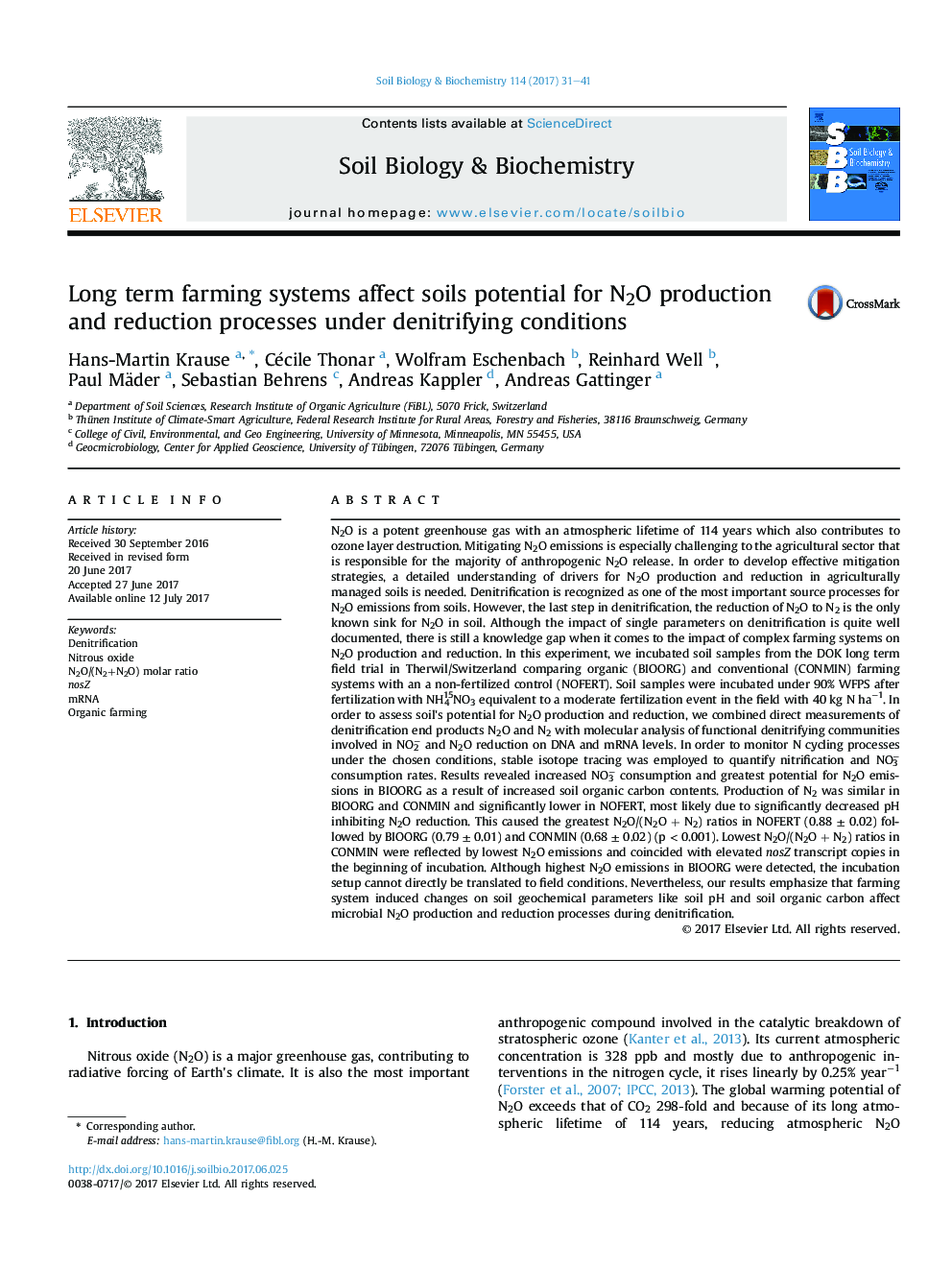| کد مقاله | کد نشریه | سال انتشار | مقاله انگلیسی | نسخه تمام متن |
|---|---|---|---|---|
| 5516304 | 1542570 | 2017 | 11 صفحه PDF | دانلود رایگان |

- Higher N2O/(N2OÂ +Â N2) molar ratio in organic compared to conventional farming system.
- Low N2O reduction in unfertilized farming system due to low pH.
- Highest nosZ transcripts in conventional farming systems coincide with N2O emissions.
N2O is a potent greenhouse gas with an atmospheric lifetime of 114 years which also contributes to ozone layer destruction. Mitigating N2O emissions is especially challenging to the agricultural sector that is responsible for the majority of anthropogenic N2O release. In order to develop effective mitigation strategies, a detailed understanding of drivers for N2O production and reduction in agriculturally managed soils is needed. Denitrification is recognized as one of the most important source processes for N2O emissions from soils. However, the last step in denitrification, the reduction of N2O to N2 is the only known sink for N2O in soil. Although the impact of single parameters on denitrification is quite well documented, there is still a knowledge gap when it comes to the impact of complex farming systems on N2O production and reduction. In this experiment, we incubated soil samples from the DOK long term field trial in Therwil/Switzerland comparing organic (BIOORG) and conventional (CONMIN) farming systems with an a non-fertilized control (NOFERT). Soil samples were incubated under 90% WFPS after fertilization with NH415NO3 equivalent to a moderate fertilization event in the field with 40 kg N haâ1. In order to assess soil's potential for N2O production and reduction, we combined direct measurements of denitrification end products N2O and N2 with molecular analysis of functional denitrifying communities involved in NO2â and N2O reduction on DNA and mRNA levels. In order to monitor N cycling processes under the chosen conditions, stable isotope tracing was employed to quantify nitrification and NO3â consumption rates. Results revealed increased NO3â consumption and greatest potential for N2O emissions in BIOORG as a result of increased soil organic carbon contents. Production of N2 was similar in BIOORG and CONMIN and significantly lower in NOFERT, most likely due to significantly decreased pH inhibiting N2O reduction. This caused the greatest N2O/(N2O + N2) ratios in NOFERT (0.88 ± 0.02) followed by BIOORG (0.79 ± 0.01) and CONMIN (0.68 ± 0.02) (p < 0.001). Lowest N2O/(N2O + N2) ratios in CONMIN were reflected by lowest N2O emissions and coincided with elevated nosZ transcript copies in the beginning of incubation. Although highest N2O emissions in BIOORG were detected, the incubation setup cannot directly be translated to field conditions. Nevertheless, our results emphasize that farming system induced changes on soil geochemical parameters like soil pH and soil organic carbon affect microbial N2O production and reduction processes during denitrification.
Journal: Soil Biology and Biochemistry - Volume 114, November 2017, Pages 31-41